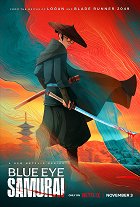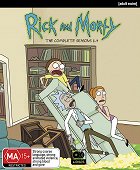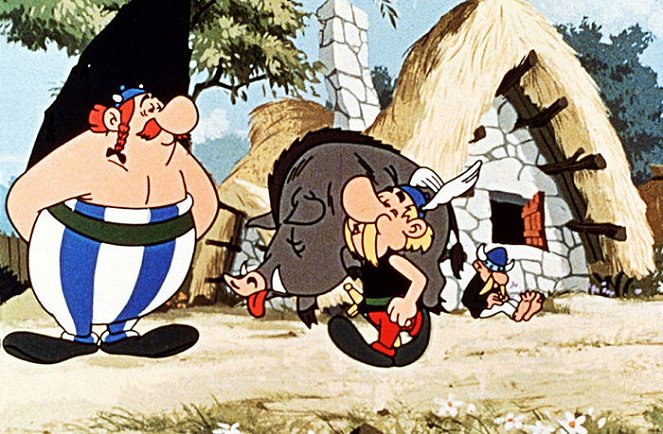Animaatio - Genret
Suosituin suoratoistopalveluissa tänään
The origin of animation and film
The term animation refers to the process of making things appear to move. It is a mechanical procedure in which we watch a sequence of static but slightly different images projected in rapid succession, and the inertia of the human eye produces the impression of smooth movement. Animation is also the basis for film as such, which uses the same effect: individual frames are played back at a speed that the human eye can no longer perceive, and as a result we see the sequence as a continuous moving image.
An animated film is a type of film that is made by taking individual frames, which are often stacked together to create the effect of animation. Originally, animated films were made using hand drawings or puppets, but nowadays the genre is dominated by computers. Animation as a genre primarily describes a different method of creation in contrast to regular live-action films, and animated films can therefore fall into any other genre; often fairytales and fables or adventure and fantasy, but they can also be dramas, science fiction, comedies and musicals.
The invention of the stroboscope in 1832 was a breakthrough in the world of animation. It created the illusion of motion by viewing a rotating series of images through a narrow slit. The praxinoscope, introduced in 1882, was similarly revolutionary as it made possible for the first time to project moving images onto a screen. It was the forerunner of the kinetoscope, a device for viewing moving pictures, patented by Thomas Edison, and the cinematograph, invented by brothers Louis Lumière and Auguste Lumière in 1895, which gave birth to cinematography as such. Until then, animation was used as a kind of attraction, for advertising purposes and for the production of optical toys. After the invention of the feature film, it was neglected until 1908, when J. Stuart Blackton invented the technique of stop-motion animation, i.e. animation created by taking a series of photographic images.
The beginnings of American animation
Even before the First World War, several advanced technologies had already been developed in the USA, for instance the mechanical printing of background drawings, thanks to which the background did not have to be redrawn each time, or the idea of drawing moving figures on transparent celluloid (so-called ultrafane), which also greatly facilitated work with an fixed background. The heyday of animation came in the post-war period, however, when cinema began to become an industry, individual disciplines became specialised and the division of labour made it possible to produce films more quickly and economically. This is also when the first studios that produced cartoons began to emerge. At the time, the filmmakers were independent producers who sold the rights to their films to distributors, who then included them in a series of short films shown in cinemas before the main feature. The Sinking of the Lusitania (1918) by Winsor McCay (creator of the dinosaur Gertie) is considered the first animated film to exceed the length of all short animated clips up to that time.
Animated films were created using a variety of techniques, but the introduction of rotoscoping technology, which allowed a feature film to be used to redraw the outline of the character, field by field, was essential as it made possible to capture the film's characters in much more natural motion than before. The creator of this method, Max Fleischer, applied it in his series of animated shorts Out of the Inkwell, starring Koko the Clown, which was a success throughout the 1920s, and in the 1930s, together with his brother Dave, he created the characters Popeye the Sailor and Betty Boop.
The Sinking of the Lusitania (1918)
Kuva © Universal Film Manufacturing Company
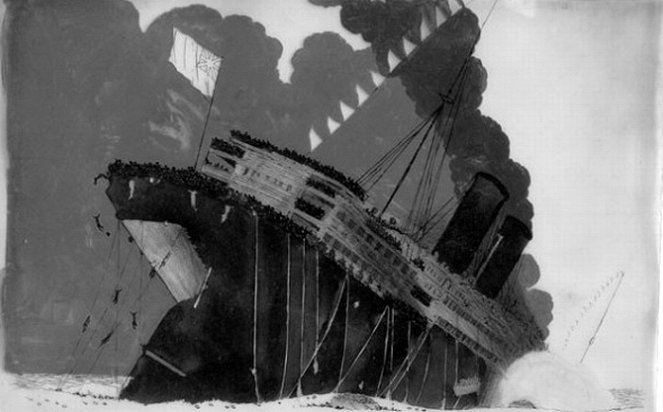
The first hits of Walt Disney and Warner Bros.
The young Walt Disney had been trying to make it in the USA since 1919, but his journey through several unsuccessful agencies producing short animated films did not bear fruit until he and his brother Roy founded the Disney Brothers Studio, where they produced animated series for distributors Warner Bros. and MGM. However, since they didn't have the rights to the animated characters (which included Oswald the rabbit), Walt Disney invented his own: Mickey Mouse. The first two films starring Mickey Mouse were not successful, but then came the invention of sound and the third film could already be a sound film. It was called Steamboat Willie (1928) and was a breakthrough for Disney, propelling them to the forefront of the world of film animation. Another hit of the 1920s was the visually imaginative and whimsical Felix the Cat series, but it did not survive the advent of sound, nor did most of the other animated characters of the silent era.
In the 1930s, short animated series became a common part of most film programmes. One of the most popular was Terrytoons with Woody Woodpecker as its most famous character. Warner Bros. set up their own animation studio, producing the Looney Toons series, with increasingly popular characters like Bugs Bunny, Daffy Duck and Porky Pig, while at the same time trying to orient some of its production towards adult audiences. Disney, who enjoyed popularity for his shorts featuring Mickey Mouse, Donald Duck and Goofy, released the first animated feature film in history, Snow White and the Seven Dwarfs, in 1937. They followed up their enormous success in the 1940s, reaching the peak of technological possibilities with Pinocchio (1940), Fantasia (1940), Dumbo (1941), and Bambi (1942). In response to Disney, the Fleischer brothers came up with a feature-length animated adaptation of Gulliver's Travels (1939), but it failed to achieve the same success as Snow White and the Seven Dwarfs.
Lumikki ja seitsemän kääpiötä (1937)
Kuva © Warner Bros. Pictures
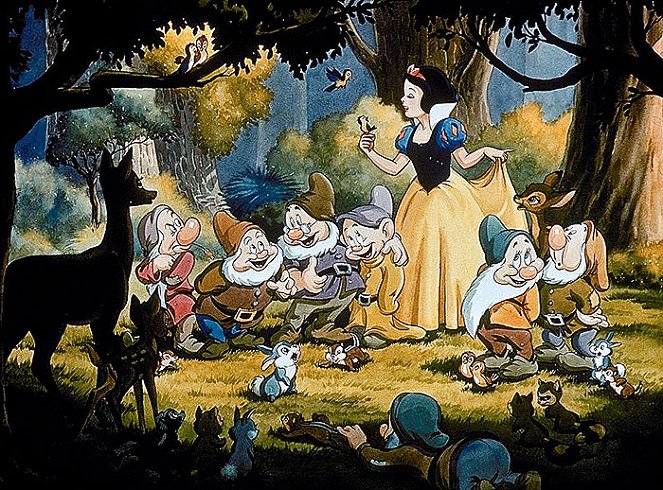
The post-war rise of television
In the 1940s, the characters Tom Cat and Jerry Mouse became popular with a series of short slapstick cartoons where they went at each other's throats without dialogue, but with sound effects and comically violent gags. The period associated with the course and aftermath of the Second World War meant a transformation of the entire film industry (with animation being used for war propaganda), and after the war Hollywood had to adapt to the advent of television, with many studios switching to producing animated shows for TV. Only Disney was unyielding, and in the 1950s they released Cinderella (1950), Alice in Wonderland (1951), Peter Pan (1953), Lady and the Tramp (1955), and Sleeping Beauty (1959).
By the mid-1960s, however, the major studios had stopped producing new animated shorts, moved the old ones completely to the TV screen. They also started producing animated series specifically for TV such as The Flinstones, The Yogi Bear Show, and Scooby-Doo, Where Are You!. During this time, Disney released in cinemas One Hundred and One Dalmatians (1961), The Sword in the Stone (1963), and The Jungle Book (1967), in addition to the huge success of its thirteen Oscar-nominated musical Mary Poppins (1964), which combined animation and live actors. This method appeared sporadically in the early days of film animation (Alice in the Wooly West, 1926), and was also used much later (Who Framed Roger Rabbit, 1988).
Askungen (1950)
Kuva © Walt Disney Pictures
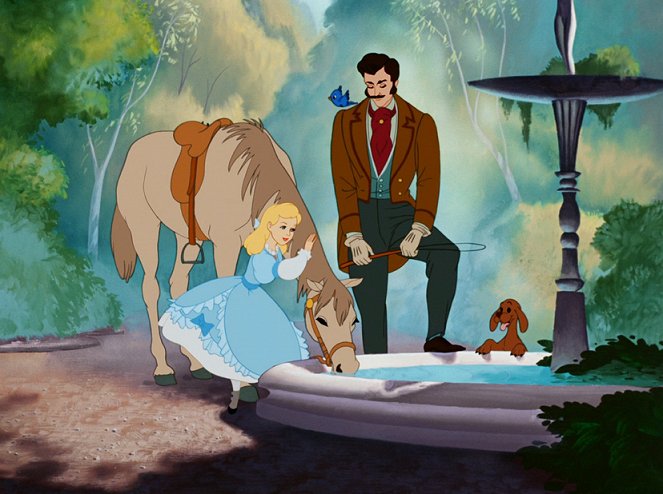
Adult productions and Disney's decline
Due to various circumstances, the production of animation for adults increased with films such as Yellow Submarine (1968), which psychedelically illustrated songs of The Beatles, or the underground Fritz the Cat (1972), which, due to its depiction of the atmosphere of a declining morality of drugs and casual sex, was the first animated film in history to receive the X-rated category, which was until then almost exclusively granted to pornography. The creator of Fritz the Cat, Ralph Bakshi, was later behind Wizards (1977), Fire and Ice (1983) and the animated adaptation of The Lord of the Rings (1978).
In the 1970s, marked by the death of Walt Disney in 1966, Disney released a series of relatively low-profile and not very successful films, including The AristoCats (1970), Robin Hood (1973), Winnie the Pooh (1977), and The Rescuers (1977). The period of decline continued into the 1980s with The Fox and the Hound (1981) and The Black Cauldron (1985), which, with its huge budget and low profit, set a new record for Disney's failures. Things didn’t improve until The Great Mouse Detective (1986) and Oliver & Company (1988), and in particular, with The Little Mermaid (1989), which followed Disney's golden period of the early 1940s in terms of audience response and heralded the new golden age of the 1990s, during which they created some of their most celebrated classics.
Disney's main competition in the 1980s was the hugely successful The Land Before Time (1988), produced by Steven Spielberg, and a number of television series, including The Simpsons, created by Matt Groening in 1987. 1981 saw the launch of MTV on cable, popularizing many animated music videos. Animation began to appear in advertisements (some children's series of the time were actually adverts for toys, e.g. Transformers, G.I. Joe and My Little Pony) and was also used as a supporting device for feature films. An animated clip featuring Roger Rabbit, Tummy Trouble (1989), was released as a short screened before the family comedy Honey, I Shrunk the Kids (1989), the musical Pink Floyd: The Wall (1982) included about 15 minutes of animated sequences, and CG animation began to be used thanks to the development of computers (largely for the first time in the 1982 film TRON).
Keltainen sukellusvene (1968)
Kuva © United Artists
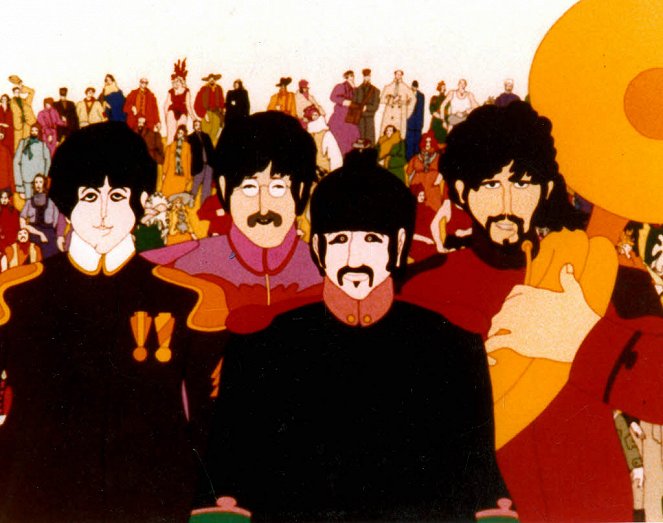
Disney's Golden Nineties and Pixar's domination
In the 1990s, Disney began its renaissance when Beauty and the Beast (1991, the first animated film ever nominated for an Academy Award in the Best Picture category), Aladdin (1992) and The Lion King (1994) broke successive box office records. They were followed by Pocahontas (1995), The Hunchback of Notre Dame (1996), Hercules (1997), Mulan (1998), and Tarzan (1999). The only exception was The Rescuers Down Under (1990), which has been largely forgotten and caused Disney from then on to release all of its sequels only on video and DVD (until 2018, when Ralph Breaks the Internet premiered in cinemas). The success of The Simpsons brought South Park, Family Guy, and Futurama to the world of television, and animated series boomed on the cable channel Cartoon Network.
Computer animation started to come to the fore in the 1980s, but it wasn't until the 90s that it really took off. In 1986, Steve Jobs bought a company called Graphics Group from George Lucas and renamed it Pixar. Over time, that company, which focused mainly on hardware and software for computer graphics, became an animation studio that produced short three-dimensional films whose primary purpose was to demonstrate the possibilities of the technology to potential customers. Disney took notice of them and signed with Pixar a three-picture deal. The first of them, Toy Story (1995), was incredibly successful in cinemas and revolutionised the field of animated films.
Over the next decade, Pixar would produce five more feature films praised by audiences and critics alike: A Bug's Life (1998), Toy Story 2 (1999), Monsters, Inc. (2001), Finding Nemo (2003) and The Incredibles (2004), which earned them the reputation of the best animation studio in the world. That reputation was only confirmed in the following years with Cars (2006), Ratatouille (2007), WALL-E (2008), Up (2009), and Toy Story 3 (2010). Ironically, Pixar's decline in quality came about after it was bought out in 2006 by Disney, which by then was struggling to compete with the three-dimensional animated films Chicken Little (2005) and Meet the Robinsons (2007).
Toy Story - Leksaksliv (1995)
Kuva © 1995 DISNEY
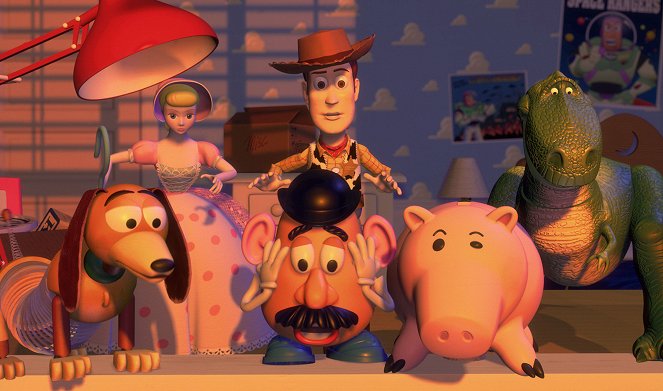
The rise of other animation studios
Disney wouldn’t be thrive in the field of 3D animation until the release of Bolt (2008) and Tangled (2010); up until then they were more successful with classic animation films like The Emperor's New Groove (2000), Atlantis: The Lost Empire (2001), Lilo & Stitch (2002), Treasure Planet (2002), and The Princess and the Frog (2009). Other big players in the animation market were Blue Sky with the Ice Age series (since 2002) and Dreamworks with Antz (1998), The Prince of Egypt (1999), and the Shrek series (since 2001). In 2002, the Academy Awards introduced the Best Animated Feature category, and Shrek, which parodied fairytale clichés, was the first winner.
The first decade of the 21st century also showed that 3D animation would be the mainstream in animated films. After 2009, three-dimensional animated films were also released with 3D glasses versions, providing a spatial viewing experience (the first being Monsters vs. Aliens). Disney tried to succeed in 2011-2012 with the renewed distribution of some older titles, additionally converted to 3D, but it was not very financially successful and the strategy was quickly abandoned and only new animated films have been converted to 3D since then.
They also released new films: Wreck-It Ralph (2012), Frozen (2013), and Big Hero 6 (2014), and Pixar did the same with Brave (2012) and Inside Out (2015). Dreamworks made a name for itself with the series Madagascar (since 2005), Kung Fu Panda (since 2008), and How to Train Your Dragon (since 2010). Blue Sky was successful with a pair of Rio films (2011 and 2014), Sony with Hotel Transylvania (since 2012), and Illumination Entertainment with Despicable Me (since 2010). Also worth mentioning is studio Laika and their films shot using stop motion puppet animation, such as Coraline (2009), Kubo and the Two Strings (2016), and Missing Link (2019).
Shrek (2001)
Kuva © 2001 Dreamworks Pictures
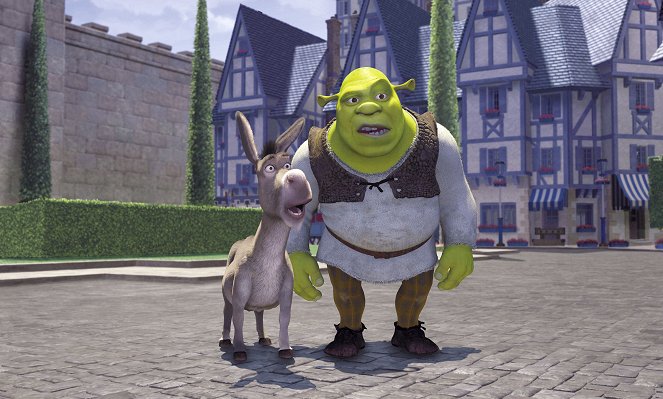
Unconventional animated productions
People like Tim Burton and Wes Anderson, filmmakers well known for the visually distinctive style of their live-action films, have also dabbled in animation, creating, among others, the stop-motion films The Nightmare Before Christmas (1993), Corpse Bride (2005), Fantastic Mr. Fox (2009), and Isle of Dogs (2018). Robert Zemeckis also started experimenting with motion capture technology that allowed him to record the actors' movements on a computer and then imprint them on animated models. This is how he made The Polar Express (2004) and A Christmas Carol (2009). The adult animated film genre continued with films such South Park: Bigger, Longer & Uncut (1999), and Sausage Party (2016), the puppet satire Team America: World Police (2004), and the series Ugly Americans (since 2010), Rick and Morty (since 2013) and BoJack Horseman (since 2014).
In addition, the period between 2010 and 2020 was marked by a flurry of 3D animated films from Europe, Asia, Africa and South America that attempted, with varying success, to break into the market and match the highlights of established studios; the include The Adventures of Tintin (Paramount Pictures, 2011), The Lego Movie (Warner Bros, 2014), Zootopia (Disney, 2016), Coco (Pixar, 2017) and Spider-Man: Into the Spider-Verse (Sony, 2018). Thanks it, animated films from Russia (Snow Queen: Magic of the Mirror, 2012), Spain (Tad, the Lost Explorer, 2012), South Africa (Khumba, 2013), Malaysia (Ribit, 2014), Luxembourg (Richard the Stork, 2017) and Belgium (The Queen's Corgi, 2019) have also been widely distributed abroad.
Tim Burton's Corpse Bride (2005)
Kuva © Warner Bros.
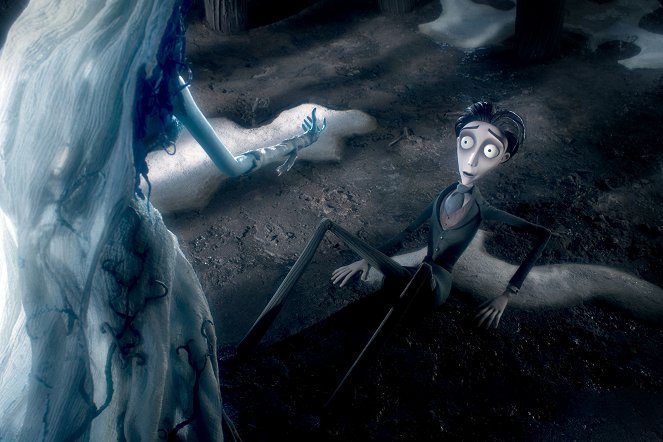
European animation
Animated films appeared much earlier in Europe and other parts of the world. In Europe, animation was used since the 1930s, especially in experimental works that took advantage of the fact that it was cheaper to produce. Most European animators despised classical cartoons, associating them with Hollywood's market orientation, and instead used the method of stop-motion phase animation, creating the illusion of movement through the successive capturing of individual frames. Animation was used in commercials and abstract short films. In the UK, the director Len Lye, for example, experimented with animation by hand-painting directly onto film material.
The Second World War slowed down the development of animation in Europe, but several Eastern European countries, such as Hungary, Bulgaria and especially Poland, became powerhouses in the 1950s and 60s. The first Polish animated film was Janosik (1954), whose authors Wlodzimierz Haupe and Halina Bielinska would go on to win the Best Short Film Award at the Cannes Film Festival for The Changing of the Guard (1959). Polish animators Jan Lenica and Walerian Borowczyk created short films characterised by their pessimistic and surreal atmosphere, such as House (1958). In the second half of the 20th century, the greatest figures of Polish animated cinema were Miroslaw Kijowicz, Daniel Szczechura and Stefan Schabenbeck. Zbigniew Rybczynski won an Academy Award for his short Tango (1981), and director and animator Piotr Dumala's work on Freedom of the Leg (1989) and Crime and Punishment (2000) was also significant.
István Kiszly Kató is considered the founder of Hungarian animation; thanks to him short animated clips have been produced in Hungary since 1914. The Pannonia animation studio was founded in Hungary in the 1950s and would achieve international recognition in the following decade. The Hungarian television series Gustavus was sold to more than seventy countries in the second half of the 1960s. Another important Hungarian animator was Marcell Jankovics, who succeeded in Cannes with his short Fight (1977) and worked on The Tragedy of Man (2011) for more than twenty years. In Bulgaria, animation has been on the rise since the 1960s thanks to the Sofia studio, and in the years that followed the country produced many artistic animated films. However, the shift from strongly auteur projects to animation aimed at a wider audience did not take place to a greater extent in Hungary and Bulgaria until the turn of the millennium.
Zmiana warty (1958)
Kuva © Studio Miniatur Filmowych (Warszawa)
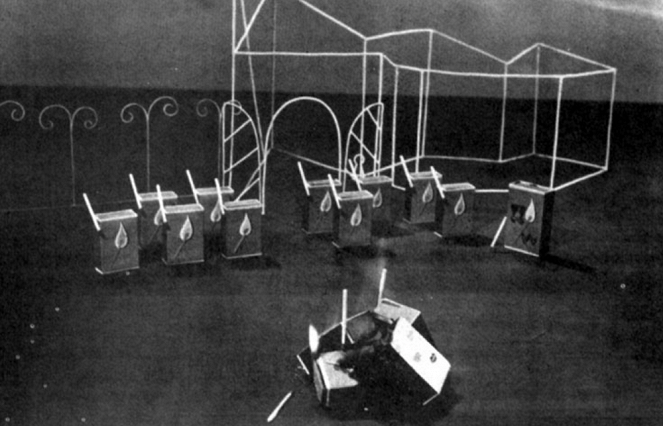
Animation in France
France has always had a privileged position within European animation, with one of the longest histories, dating back to the end of the 19th century – the inventor of the praxinoscope mentioned in the introduction was the Frenchman Charles-Émile Reynaud. The first French animated feature film was The Story of the Fox in 1930, which received a German soundtrack seven years later and a French soundtrack in 1941. Many years later, in 1965, award-winning director Jean-Francois Laguionie, creator of The Painting (2011) and The Prince's Voyage (2019), made his first animated short. In 1967, a film series based on the famous Asterix comic books began to be made in France. The first part, Asterix the Gaul, was made without the knowledge of the authors of the comic book, René Goscinny and Albert Uderzo, who then worked as directors on the next film in the series, Asterix and Cleopatra (1968).
The French animated sci-fi film Fantastic Planet (1973), which was animated in Czechoslovakia and whose creator René Laloux later directed Time Masters (1982) and Light Years (1988), is also notable. On TV, the animated series Inspector Gadget (since 1983) and the Belgian comic strip The Adventures of Tintin (since 1990) were popular in France. A major breakthrough in the field of French film animation was The Triplets of Belleville (2003), which was nominated for two Oscars – Best Animated Film and Best Song – and whose director Sylvain Chomet later succeeded with The Illusionist (2010). Other Oscar-nominated films include Persepolis (2007), A Cat in Paris (2010), and I Lost My Body (2019), but also worth mentioning are the hugely successful The Little Prince (2015), the adventure film Long Way North (2015), and Luc Besson's Arthur and the Invisibles trilogy (since 2006).
British animation and success with plasticine
The first British animated feature film was the 1954 satire Animal Farm, a fable criticising communism and dictatorship, which led to the first introduction of a number of film animation-related professions in the country. Watership Down (1978) was also a great international success. However, it wasn't until Aardman Animations, which used stop motion and malleable plasticine figures, that Britain made its mark in the history of the genre.
Director Nick Park introduced Wallace the model doll and his dog Gromit in the short film Wallace & Gromit: A Grand Day Out (1989), and followed it which Wallace & Gromit: The Wrong Trousers (1993), which earned him an Academy Award, enabling the studio to raise enough funds for a feature film. This was Chicken Run (2000), followed by Wallace & Gromit in The Curse of the Were-Rabbit (2005), a pair of Shaun the Sheep films (2015's Shaun the Sheep Movie and 2019's Shaun the Sheep Movie: Farmageddon), and Arthur Christmas (2011), which was created using standard three-dimensional computer animation.
Eläinten kapina (1954)
Kuva © Louis De Rochemont Associates
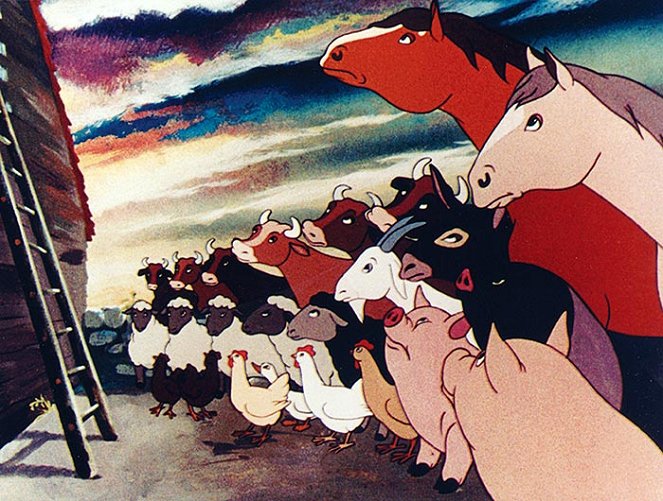
The tradition of puppet animation in Czechoslovakia
Compared to France or Great Britain, Czechoslovak animation has a long history of working mainly with puppets. The first studios dedicated to the production of animated films were established in Czechoslovakia in 1939, in Zlín, under the name FAB – Filmové Ateliéry Baťa, and were originally built to shoot commercials. The first Czechoslovak short animated film Ferda the Ant (1944) was also a puppet film made by Hermína Týrlová, an employee of the Zlín studios. Her second experience with film was the animation of Bořivoj Zeman's The Christmas Dream (1945), on which she collaborated with Karel Zeman, who joined her in 1942 as her assistant, and who would become one of the leading figures of Czech animation with his feature films Journey to the Beginning of Time (1955), The Deadly Invention (1958), The Outrageous Baron Munchausen (1961), and The Stolen Airship (1966), in which he combined live actors with animated elements and puppet animation, as well as purely animated films such as The Sorcerer's Apprentice (1977) and The Tale of John and Mary (1980).
Animation in Czechoslovakia was mainly used in children's television series. From the 1950s onward, a number of short animated series were produced, which from 1965 were grouped into the children's programme Večerníček. The most famous of these is probably the Little Mole (from 1957), in which animator Zdeněk Miler created a mole character that later became a symbol of Czech animation. Other popular animated bedtime stories include Fairy Tales from Moss and Fern (from 1968), Pat & Mat (from 1976), and Bob and Bobby – Top Hat Rabbits (from 1979).
Another important personality of Czechoslovak animated film was Jiří Trnka, a versatile artist who worked at the National Theatre as a set and costume designer and later began designing costumes for filmmakers. In 1945 he founded the Bratři v triku animation studio and in 1947 he also set a puppet film studio. He is especially famous for his puppet films Prince Bayaya (1950), Old Czech Legends (1952) and A Midsummer Night's Dream (1959). Jan Švankmajer, who used puppets, make up and animated elements in his surrealistically stylized feature films Alice (1988), Faust (1994), Conspirators of Pleasure (1996) and Little Otik (2000), became famous for his imaginative stop motion animation.
Ihmemaailman salaisuudet (1955)
Kuva © Československý státní film
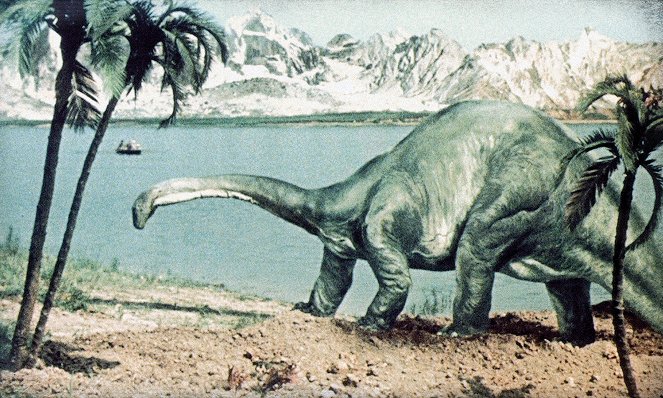
Development of animation in other European countries
In other European countries, only a few animation studios have been active since about the 1970s, when they produced animated series for TV, and would often cooperate with animators from Japan – this is how, for example, Maya the Bee (from 1975) was created. Film festivals would feature animated shorts by independent filmmakers from, for instance, the Soviet Union. Over time, many countries succeeded in establishing themselves in the animation market even in the face of international competition thanks to distinctive and individual titles such as Waltz with Bashir (Israel and France, 2008), Loving Vincent (Poland, 2017), and Klaus (Spain, 2019). The Irish animated fantasy films The Secret of Kells (2009), Song of the Sea (2014) and Wolfwalkers (2020), inspired by Irish and Celtic mythology, were also internationally successful.
The tradition of Czechoslovak puppet animation was continued in the Czech Republic after the turn of the millennium by, among others, a trio of short story films based on Jan Werich's fairytale collection Fimfarum (since 2002) and the work of animator Jan Balej, author of One Night in the City (2007) and Little from the Fish Shop (2015). Since then, Czech animation has also been trying to match foreign 3D animation, especially in Goat Story: The Old Prague Legends (2008), The Oddsockeaters (2016) and Harvie and the Magic Museum (2017). The comic book adaptation of Alois Nebel (2011) had a exceptional position within Czech films. It was made using the previously mentioned rotoscoping method, where the entire film was first shot with live actors and then manually redrawn frame by frame and subsequently edited in computers. This is a similar method that Richard Linklater used in the American films Waking Life (2001) and A Scanner Darkly (2006).
Waltz with Bashir (2008)
Kuva © The Match Factory
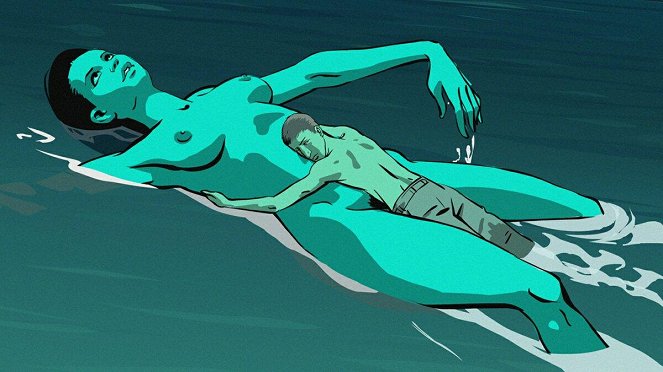
Japanese anime
Japanese animators are also extremely important, having successfully establishing their own distinctive style of hand animation, known as anime, which due to a shortage of methods, was produced with an emphasis on the artistic qualities of the image and not on its movement – for example, it was customary to pay a lot of attention to the backgrounds, which, thanks to their sophistication and detail, helped to shape the overall atmosphere. The first feature-length anime was the 1945 war film Momotaro's Divine Sea Warriors, sponsored by the Japanese Imperial Navy. Anime was broadcast on TV from about the beginning of the 1960s, and at about the same time it was introduced to foreign markets. Some of them were produced with the direct intention of making it to the TV screens in the USA, such as Astro Boy (from 1963), Mahou Tsukai Sally (from 1966) and Speed Racer (from 1967). In Japan, on the other hand, Sazae-san was already very popular at that time, having been broadcast continuously since 1969, and with more than 7,500 episodes it’s listed in the Guinness Book of World Records as the longest-running series in history (the production of new episodes was interrupted only in 2020 by the coronavirus pandemic).
During the 1970s, the increase in the popularity of manga comics in Japan enriched anime with some typical features and genres and brought it into contemporary art. Unusual for foreign audiences was, for example, the sub-genre called mecha, which featured giant robots, or hentai, which revolved around erotic and pornographic themes. In the 1980s, anime became mainstream and experienced a huge boom, supported by the creation of an enormous number of titles, and in the 1990s it began to expand extensively in foreign markets with classics like Akira (1988), Ghost in the Shell (1995), and Perfect Blue (1998). But the biggest legend among filmmakers would become Studio Ghibli and its leading man Hayao Miyazaki, who directed, among others, Nausicaä of the Valley of the Wind (1984), My Neighbor Totoro (1988), Porco Rosso (1992) and Princess Mononoke (1997), as well as Spirited Away (2001), which earned him an Oscar.
Other Japanese filmmakers of note include Mamoru Hosoda, who was behind Summer Wars (2009) and Wolf Children (2012), Shigeyuki Hayashi, creator of Galaxy Express 999 (1979), Isao Takahata, who directed Grave of the Fireflies (1988) and Pom Poko (1994), Yoshiaki Kawajiri, with Wicked City (1987), Ninja Scroll (1993) and Vampire Hunter D (2001), and Makoto Shinkai, whose Your Name (2016) became the highest-grossing anime film of all time, surpassing Spirited Away. Long-term popular anime series include Dragon Ball (since 1986), One Piece (since 1999), Pokémon (since 1997), Naruto (since 2002), Fullmetal Alchemist (since 2003), Death Note (since 2006), and Attack on Titan (since 2013).
Filmmaniak
Parhaat animaatioelokuvat
Asterix erövrar Rom (1976) |
Klaus (2019) |
Spider-Man: Across the Spider-Verse (2023) |
Shrek (2001) |
Coco (2017) |
Prinsessa Mononoke (1997) |
Henkien kätkemä (2001) |
Lejonkungen (1994) |
Lumikki ja seitsemän kääpiötä (1937) |
Draktränaren (2010) |
| Kaikki parhaat animaatioelokuvat |




